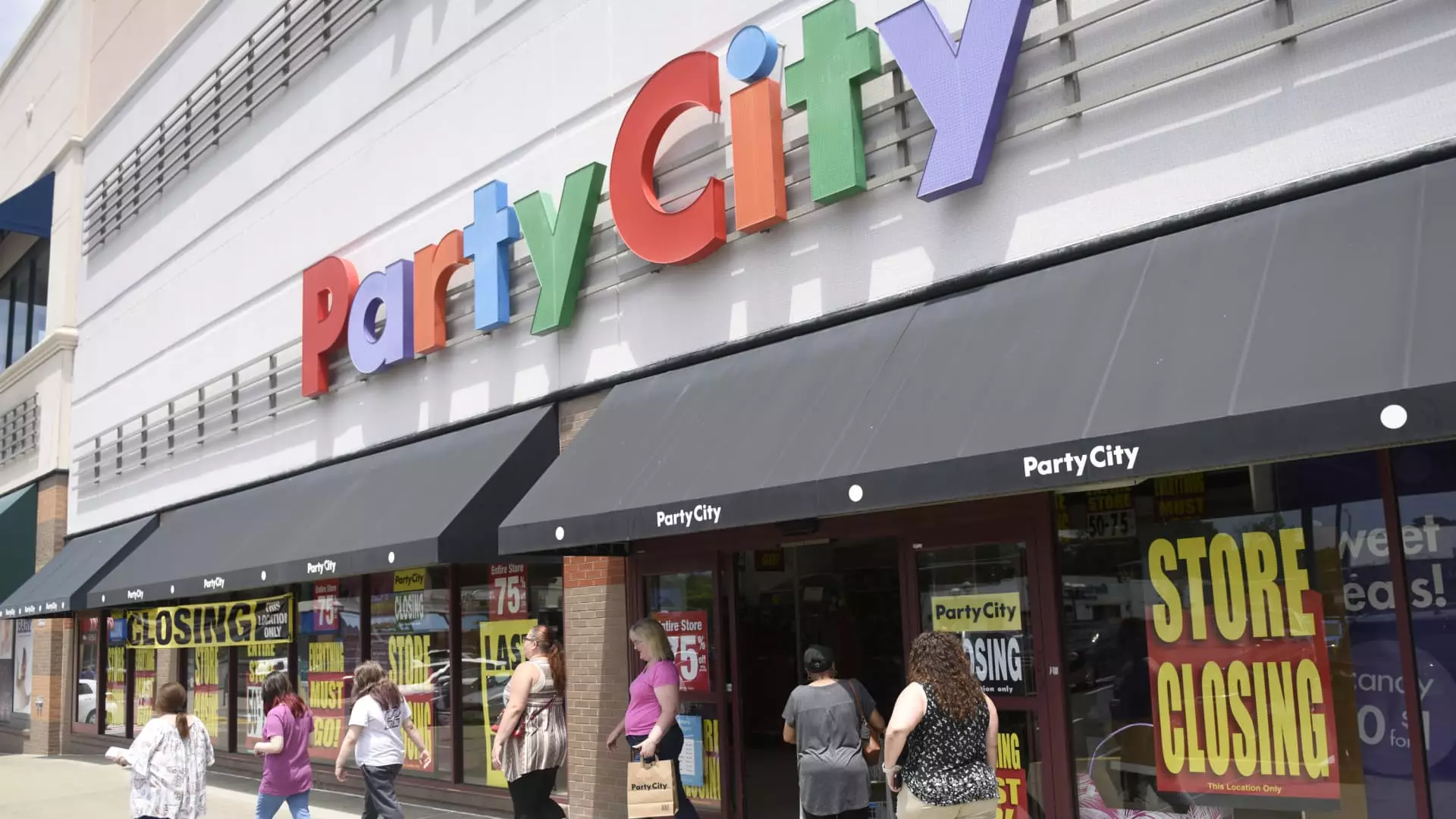The retail industry in the United States is facing a seismic shift, prominently characterized by an unprecedented rate of store closures that rivals the reshuffling triggered by the onset of the COVID-19 pandemic. The data compiled by Coresight Research indicates a troubling trend: the retail landscape is increasingly polarized, with a few dominant players prospering while many traditional brick-and-mortar stores are struggling to survive. This article delves into the factors contributing to this phenomenon, the sectors feeling the most pressure, and what the future might hold for American retailers.
The Surge in Store Closures: A Year Marked by Distress
In 2024, retail giants including Party City and Macy’s shuttered a staggering 7,325 stores. This represents the most significant closure rate since nearly 10,000 establishments closed their doors in 2020 due to pandemic-related economic impacts. As we enter 2025, the trend shows few signs of slowing, with 1,925 closures already reported by January 10. Coresight projects that this year could see approximately 15,000 stores close—indicative of a broader trend affecting both well-known chains and smaller retailers alike.
Interestingly, while overall consumer spending remained robust, the allocation of spending power has become increasingly concentrated. Major retailers—namely Amazon, Costco, and Walmart—are capturing larger market shares as consumers prioritize value and convenience. This highlights a significant divergence: while some retailers thrive, numerous smaller chains struggle to stay afloat amidst growing competition and changing consumer preferences.
The year 2024 witnessed a notable spike in retail bankruptcies, rising from 25 in 2023 to a regrettable 51. This increase underlines the precarious position of many legacy brands that have found themselves unable to adapt quickly enough to shifting market forces. For instance, discount retailers like Big Lots and specialty shops like The Container Store have faced drastic measures, including total liquidation and bankruptcy filings respectively.
The closure of physical stores often follows a well-trodden path for companies in distress. Retailers that file for Chapter 11 Bankruptcy often undergo a painful contraction phase, necessitating the closure of underperforming locations. The economic landscape has prompted many retailers to reevaluate their operational efficiency and footprint, spurred by competitive threats rather than an outright drop in consumer demand.
Consumer Behavior and a New Era of Shopping
The convergence of strong consumer spending coupled with a marked shift in purchasing behavior is reshaping the retail environment. Notably, specialty retailers appear particularly vulnerable; for example, Big Lots recently announced plans to close all its locations following a failed sale. Joann, a fabrics and craft retailer, is undergoing its second bankruptcy filing within a year, underscoring the turmoil these niche markets are experiencing.
While the traditional retail realm grapples with existential threats, new entrants, particularly from e-commerce platforms like Shein and Temu, have emerged, significantly impacting legacy retailers. Consumers are increasingly drawn to these platforms for affordability and convenience, leading to a decline in foot traffic and sales for physical stores, which face considerable overhead costs.
It’s also crucial to recognize how broader societal changes are influencing retail space occupancy. As malls and shopping centers are left with vacant slots due to anchor stores closing, alternative uses for these spaces are rising to prominence. Gyms, urgent care centers, and residential apartments are springing up in areas once dominated by retail. This shift indicates a transformation of the traditional retail model into a mixed-use approach, reflecting changing consumer dynamics and lifestyles.
David Silverman from Fitch Ratings points out that the closures of anchor stores like Macy’s have a cascading effect on neighboring establishments. Once a major retailer exits, smaller stores may be compelled to follow suit, thus reshaping the commercial landscape further.
Despite substantial closures plaguing the industry, there remains a silver lining. Coresight’s data indicate that retail openings are also on the rise, totaling 5,970 in 2024—the highest number since tracking began in 2012. Major retailers such as Dollar General, Dollar Tree, and others have added to their presence, hinting at a possible resurgence in certain segments of the market.
With 2025 projected to see around 5,800 store openings, a shift in focus can be observed. Retailers are increasingly drawn towards smaller, more efficient store formats, often located in strategic urban areas instead of sprawling malls. Retailers including Aldi, JD Sports, and Burlington Stores are slated for openings this year, suggesting that while the landscape is changing, there remains room for growth amidst the turmoil.
The U.S. retail sector is undergoing profound transformation. While closures dominate the narrative, emerging trends indicate an evolution rather than an end. Understanding these dynamics will be crucial for stakeholders navigating this shifting terrain as they strive to innovate, adapt, and ultimately thrive.

